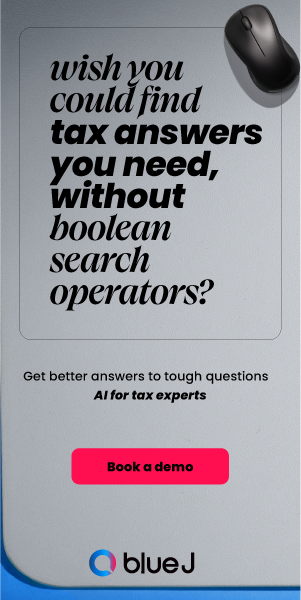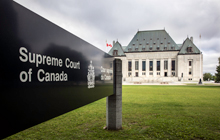The GAAR reinforcements — What even is economic substance?

With the economic substance wording in the general anti-avoidance rule, Finance Canada has given a present to the tax judiciary, says Raymond G. Adlington
 |
Raymond G. Adlington is a partner in the London office of Miller Thomson LLP. |
As part of its 35th anniversary celebrations, the general anti-avoidance rule is getting some renovations. New support beams are being installed and a paint job is planned as a package announced as part of the 2023 federal budget and then formally released (with a few very notable modifications) in draft legislation on August 4, 2023. The new support beams are (a) an economic substance test in the misuse or abuse analysis, (b) a softening of the standard to establish an avoidance transaction, and (c) a 25% penalty. The paint job is a preamble that speaks about striking balances, taxpayer certainty, and protecting the tax base and fairness of the tax system.
Economic Substance Presumption
For this article, I will take a closer look at the new "economic substance" presumption to discuss how this support works within the general anti-avoidance rule framework. This new economic substance test is in proposed subsections 245(4.1) and (4.2), which state:
(4.1) If an avoidance transaction is significantly lacking in economic substance, it is presumed that the transaction results in a misuse under paragraph (4)(a) or an abuse under paragraph (4)(b).
(4.2) Depending on the particular circumstances, the following factors establish that a transaction or series of transactions is significantly lacking in economic substance:
a. all or substantially all of the opportunity for gain or profit and risk of loss of the taxpayer — taken together with those of all non-arm's length taxpayers — remains unchanged, including because of
(i) a circular flow of funds,
(ii) offsetting financial positions,
(iii) the timing between steps in a series, or
(iv) the use of an accommodation party;
b. it is reasonable to conclude that, at the time the transaction or series was entered into, the expected value of the tax benefit exceeded the expected non-tax economic return (which excludes both the tax benefit and any tax advantages connected to another jurisdiction); and
c. it is reasonable to conclude that the entire, or almost entire, purpose for undertaking or arranging the transaction or series was to obtain the tax benefit.
For those curious, the significant changes from this August version as compared to the budget version are:
-
- The presumption in proposed subsection 245(4.1) replacing the very subjective "tends" test in the original draft;
- The addition of the "use of an accommodation party" in the factors list; and
- The addition of "or series" in the opening line of proposed paragraph 245(4.2)(b).
I tried to click on the phrase "economic substance" in the digital version of the Income Tax Act (Canada) I rely upon to answer my questions. No hyperlink was included. The legislative drafters at Finance Canada have failed to provide me with a definition. Uh-oh. The best guess from proposed paragraph 245(4.2)(a) above is that economic substance is intended to mean some change in opportunity for gain or profit or risk of loss.
Legislative Interpretation
The legislative drafters did give all of us "factors" in the enumerated list. The use of the conjunctive "and" between proposed paragraphs 245(4.2)(b) and (c) means that both of those conclusions must be drawn in relation to one of the tests set out in proposed paragraph 245(4.2)(a) before it can be a "factor" that "depending on the particular circumstances" to a presumption of misuse or abuse. Since a lack of economic substance is expressed solely as a presumption of a result of misuse or abuse, the clear conclusion is that other factors can overcome this presumption and reviewing courts are free to consider other factors as they please.
With this new support beam, Finance Canada has given a present to the tax judiciary. Judges salivate at the opportunity to break new ground and presumptions leave a broad spectrum for judicial interpretation of how this presumption will be treated following Canada Revenue Agency interpretation. Added to the mix is the qualifier of "significantly lacking," hardly a beacon of a bright-line test for taxpayers. Sadly, it will be a few years before the judiciary gets to play with this new toy and explain to taxpayers and the Canada Revenue Agency what it does.
What we do know is that overcoming presumptions requires a marshalling of evidence, both in relation to the specific transaction and in relation to the Income Tax Act (Canada) provisions at issue. This evidence ought to include legislative history, explanatory notes to help demonstrate intent, and Parliamentary debate transcripts or testimony before Parliamentary or Senate Committees to also demonstrate intent. Given extended reassessment periods that are proposed to apply if no reporting is done in respect of a transaction or series of transactions, this evidence ought to be maintained by taxpayers indefinitely.
When the judges do get their hands on this new toy, a smart lawyer will remind them of their obligation to undertake a textual analysis of new subsections 245(4.1) and (4.2). A textual analysis requires the application of the principle of expressio unius est exclusio alterius, that a syntactical presumption may be made that an express reference to one matter excludes other matters. In other words, the choice Finance Canada has made to state opportunity for profit or gain and risk of loss in proposed paragraph 245(4.2)(a) means any other basis for suggesting a lack of economic substance ought to be considered specifically rejected. The conjunctive "and" between proposed paragraphs 245(4.2)(b) and (c) means that all we really are given is a single-item list with multiple requirements. While moderately restrictive, the "economic substance" door is open a crack.
An interesting question that will also be raised is whether proposed new subsections 245(4.1) and (4.2) lead to an inference of Parliamentary intent that the presence of "economic substance" ought to lead to the reverse presumption that there has been no misuse or abuse.
History of Economic Substance
Why are we talking about a new "economic substance" support for the general anti-avoidance rule? Going back to the beginning, the 1988 Explanatory Notes that accompanied the misuse or abuse portion of the general anti-avoidance rule stated that it recognized that the provisions of the Income Tax Act (Canada) are "intended to apply to transactions with real economic substance, not to transactions intended to exploit, misuse or frustrate the Act to avoid tax." Fast forward a couple decades and we find these statements from the Supreme Court of Canada in the Canada Trustco [1] decision:
Although the Explanatory Notes make reference to the expression "economic substance", s. 245(4) does not consider a transaction to result in abusive tax avoidance merely because an economic or commercial purpose is not evident.
...
While the "economic substance" of the transaction may be relevant at various stages of the analysis, this expression has little meaning in isolation from the proper interpretation of specific provisions of the Act. Any "economic substance" must be considered in relation to the proper interpretation of the specific provisions that are relied upon for the tax benefit.
Ultimately the Supreme Court of Canada upheld the Tax Court Judge's rejection of the argument that the lack of economic substance of the transaction meant there had been abusive tax avoidance. Economic substance had been sent to its room, and rarely seen since this further admonition from the Supreme Court of Canada in the Lipson [2]decision:
The appellants raise another objection to an "overall purpose" approach. In their view, the Tax Court judge may have been relying on the taxpayers' motivation, the true economic purpose of the transactions, or their economic substance when he adopted this approach. They submit that none of these is determinative at this stage of the analysis. The appellants are correct on this point: ... Motivation, purpose and economic substance are relevant under s. 245(4) only to the extent that they establish whether the transaction frustrates the purpose of the relevant provisions.
If these proposed provisions are substantively enacted then economic substance will be allowed back outside into the sunshine. We will then be waiting to see how long a shadow it casts.
Conclusion
While not the sturdiest of support beams ever engineered, proposed subsections 245(4.1) and (4.2) will be part of the Income Tax Act (Canada) if enacted and reviewing courts will strive to give them some meaning. How should taxpayers react to this new "economic substance" element that proposed subsections 245(4.1) and (4.2) introduces into the misuse or abuse analysis? Quite simply, create and preserve your evidence. Presumptions are legal principles erected like a wall so that someone can break down a few doors to get to the result found on the other side.
The best evidence taxpayers will have if challenged by the Canada Revenue Agency under the general anti-avoidance rule is contemporaneous documentation. Insert recitals into resolutions and agreements that speak to the economic substance of each step in a series of transactions and events. Write comprehensive agreements among parties in related party transactions that demonstrate a non-circular flow of funds and that financial positions are not offsetting. Talk in glowing terms in all of those documents about the 'expected non-tax economic returns' for the familial, estate planning and profit benefits expected to be realized. Answer audit inquiries keeping in mind this new support beam. You may tend to be just fine.
Footnotes
[1] 2005 SCC 54.
[2] 2009 SCC 1.
Raymond G. Adlington is a partner in the London office of Miller Thomson LLP. Title image: iStock. Author photo courtesy Miller Thomson LLP.










(0) Comments